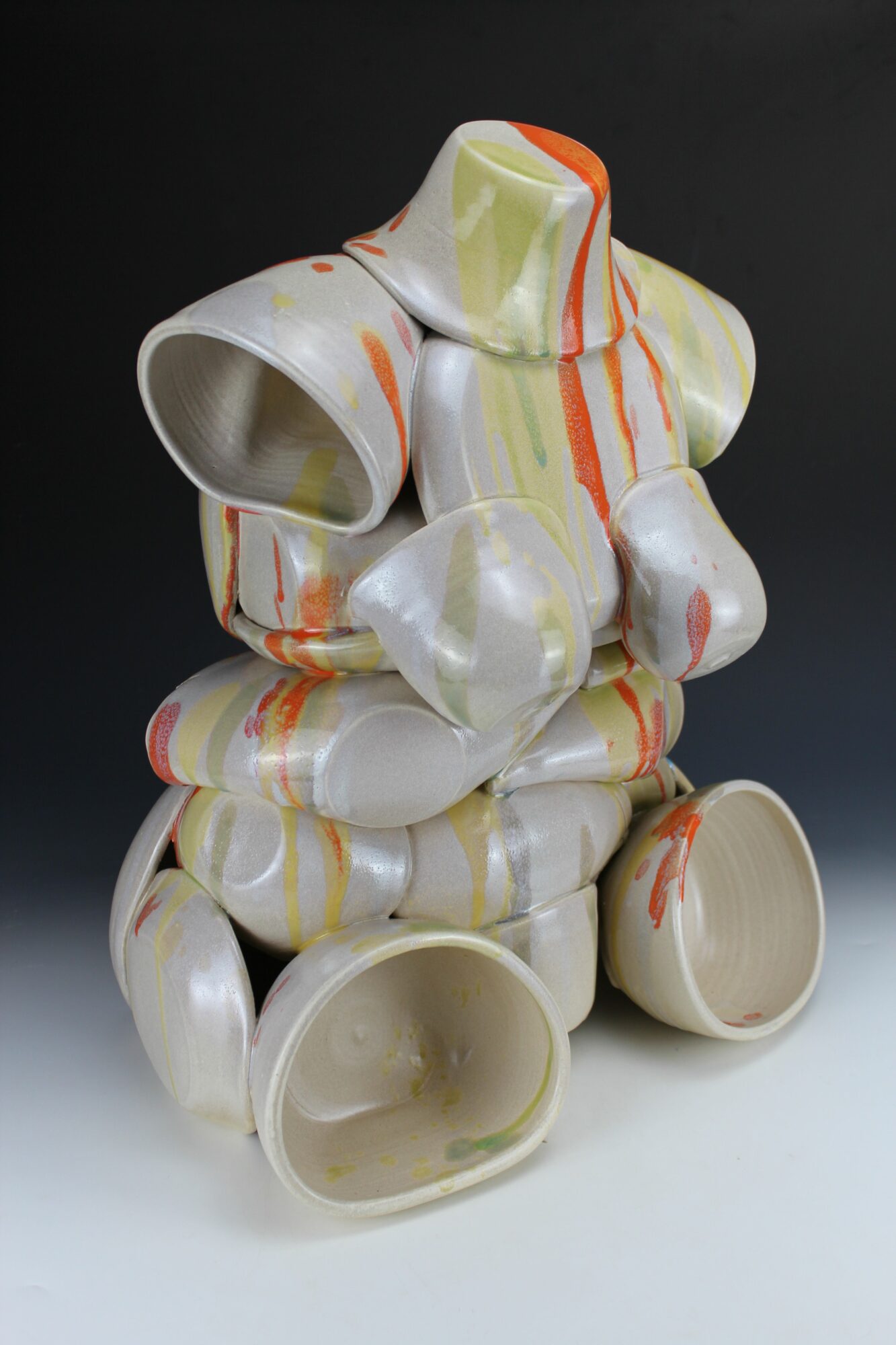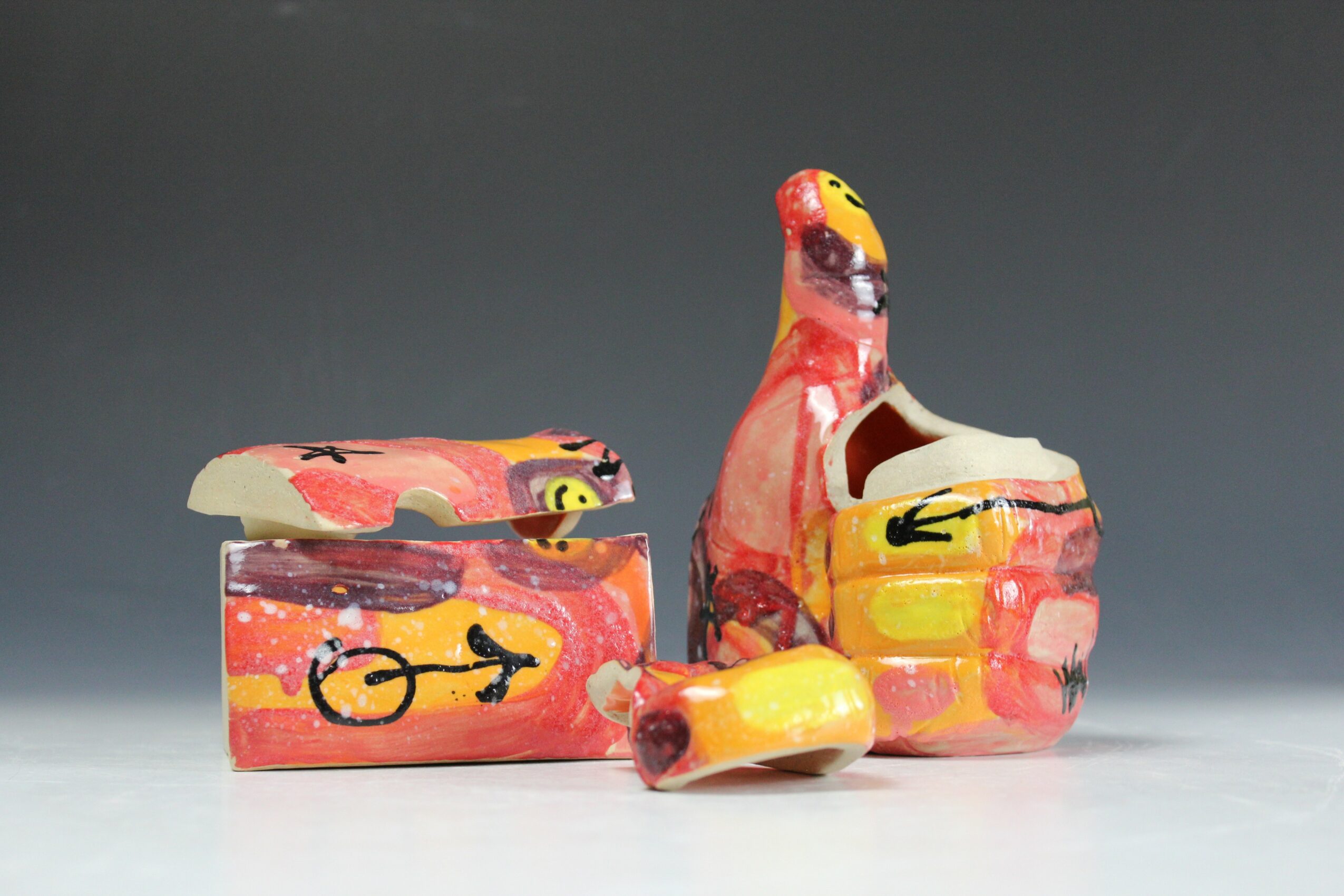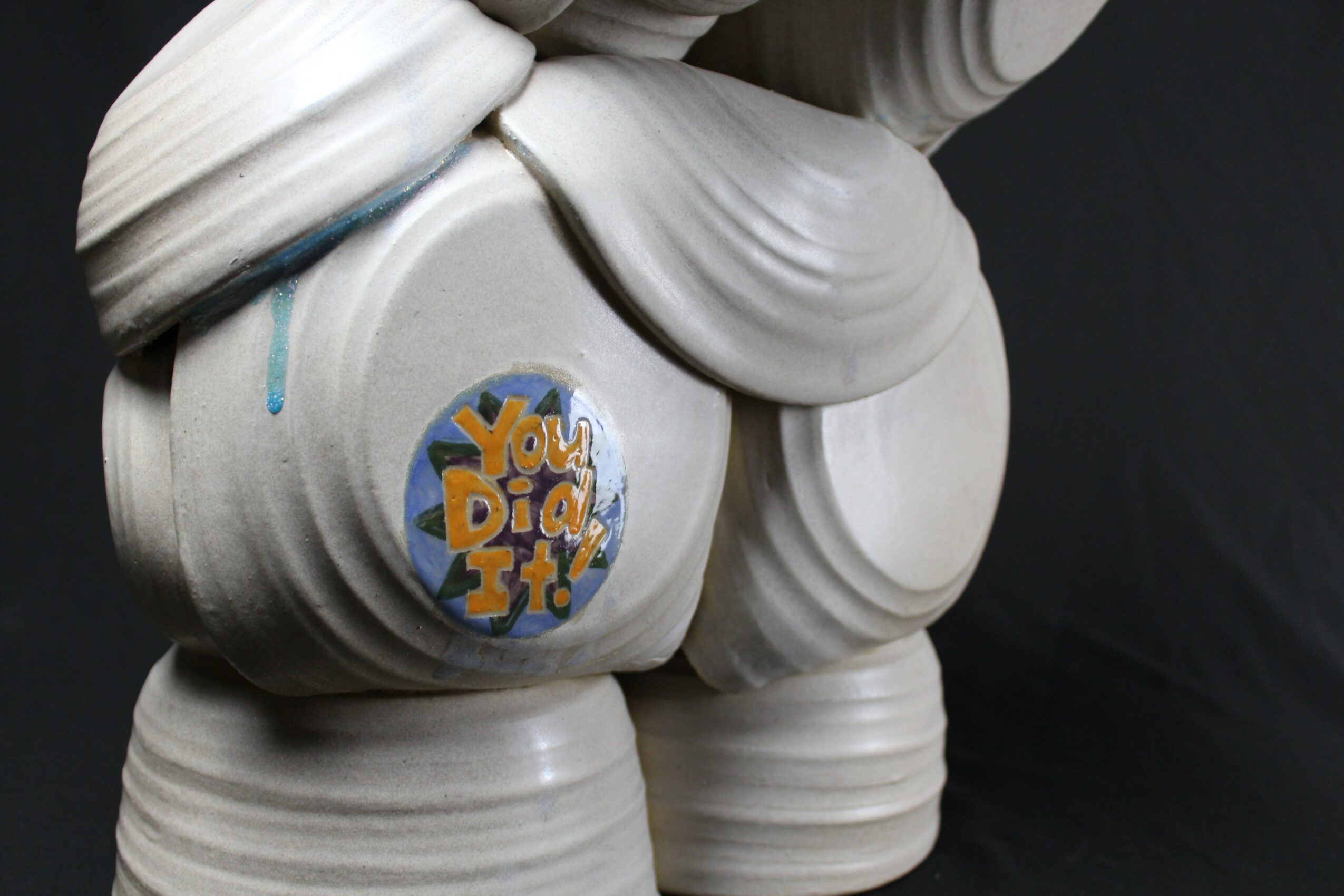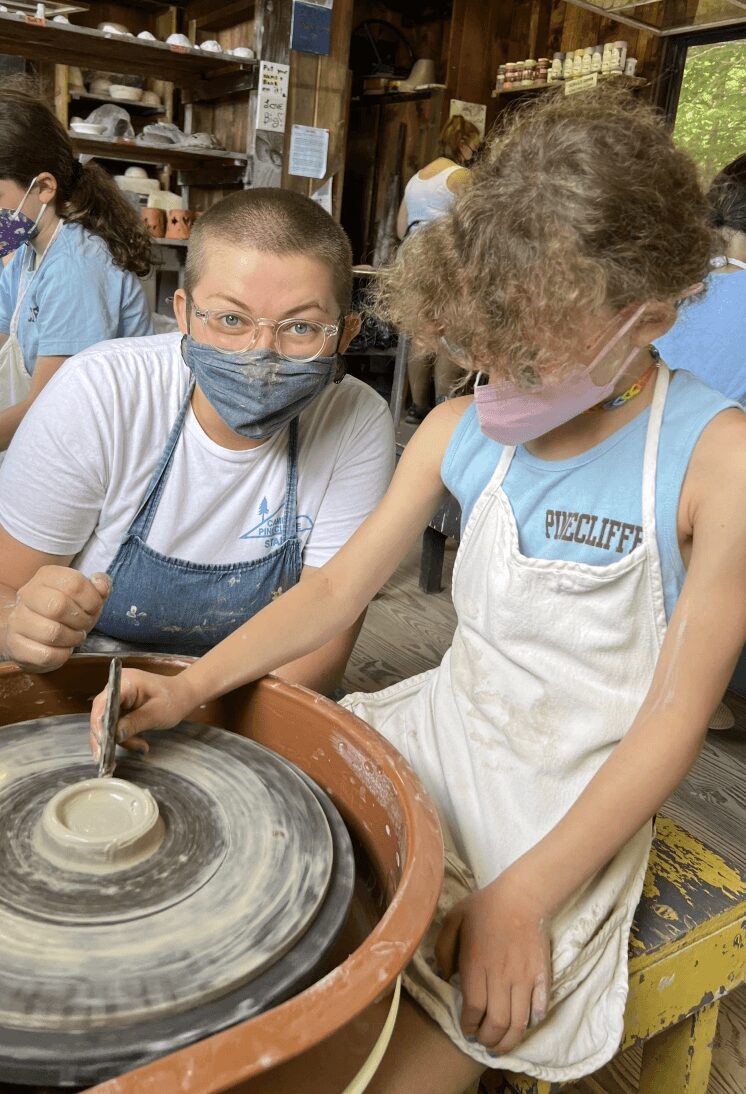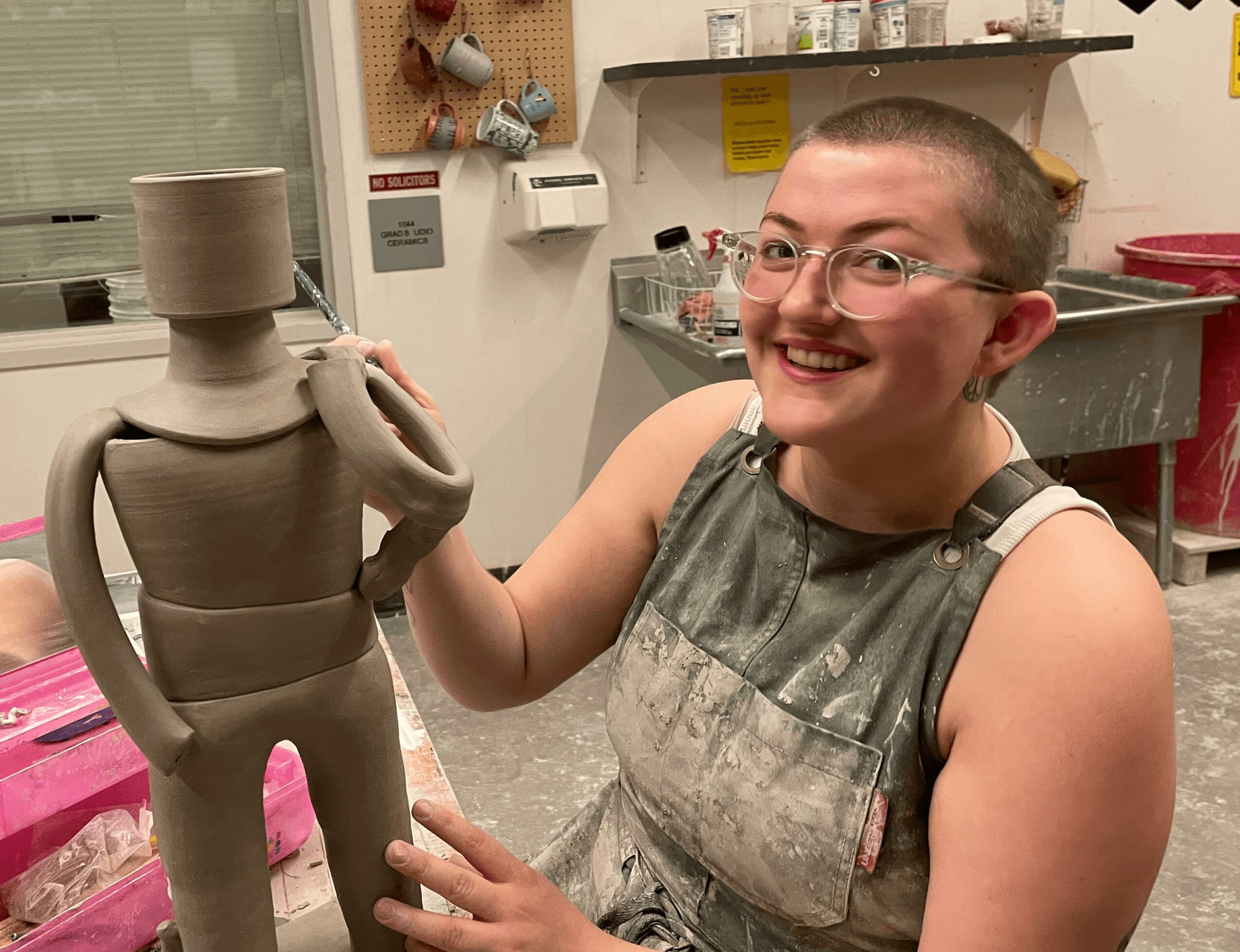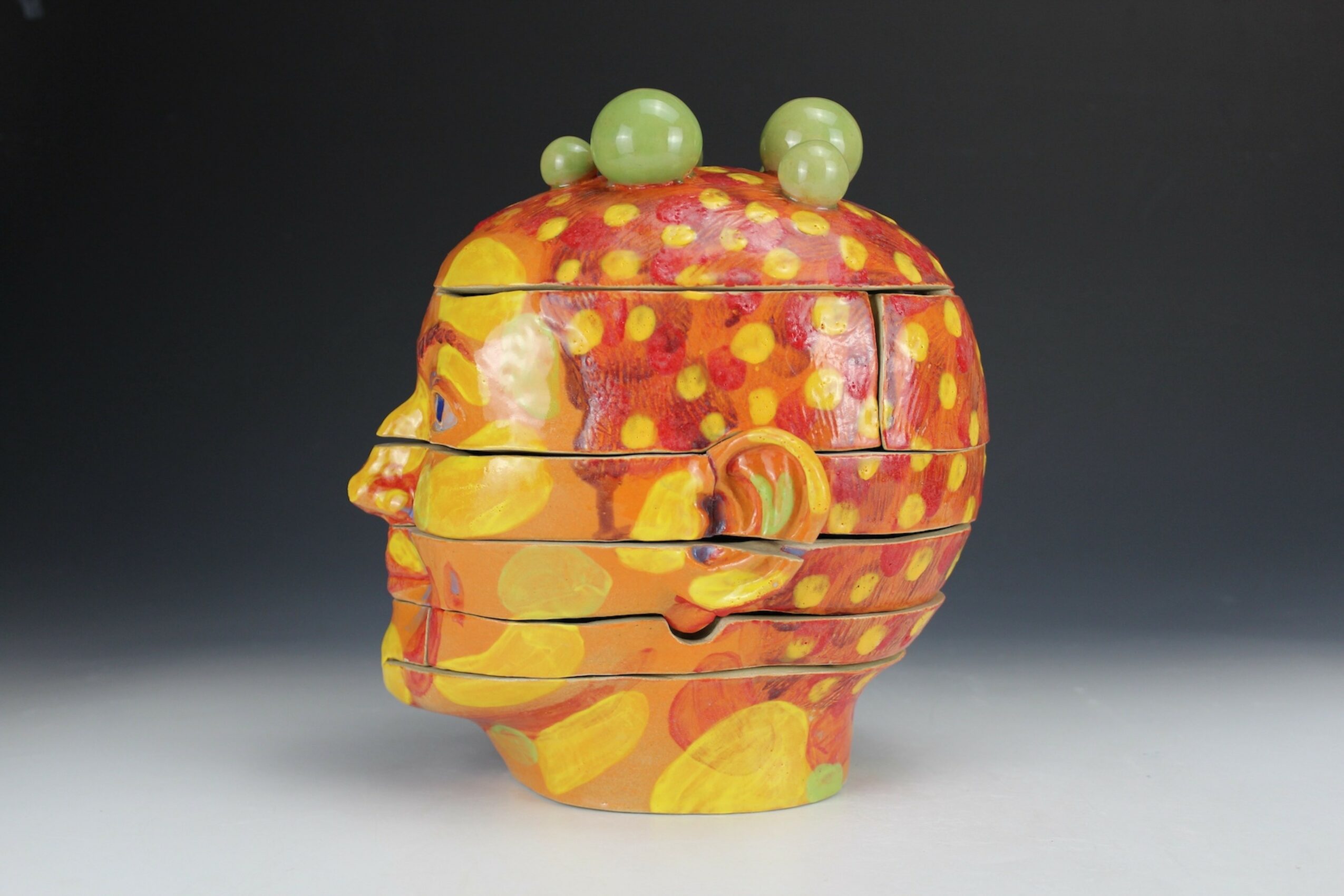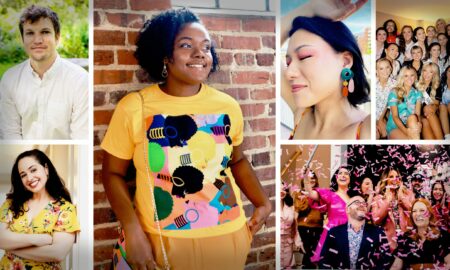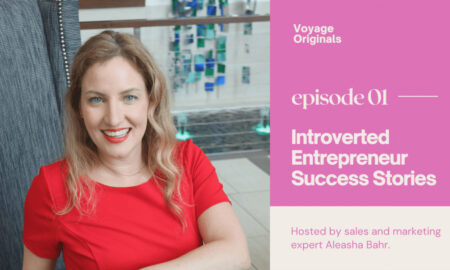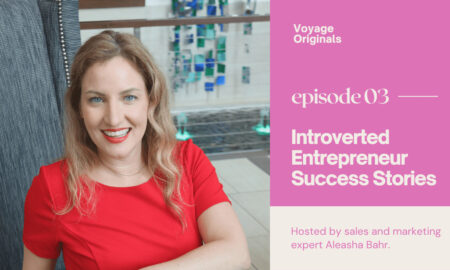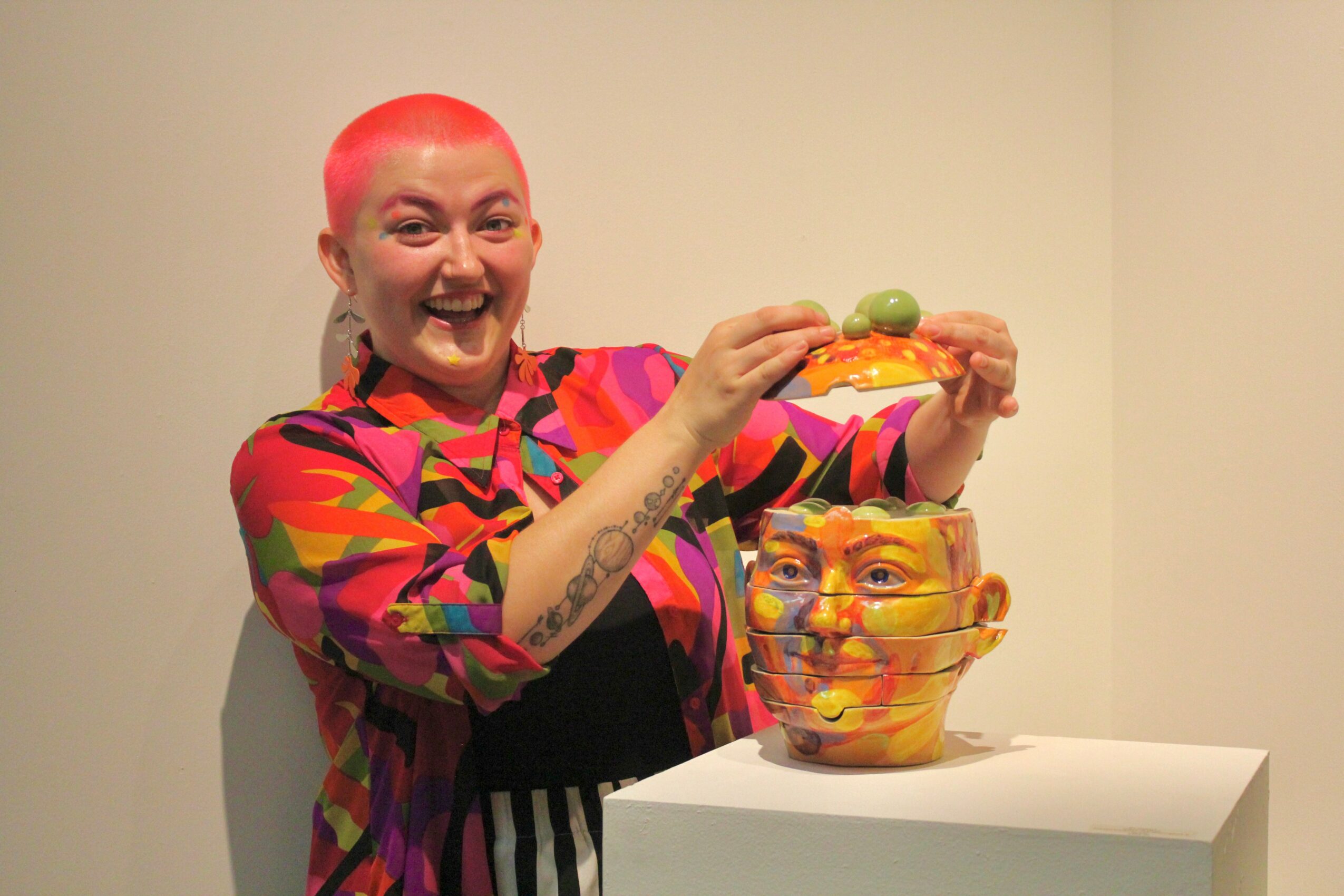

Today we’d like to introduce you to Bo Gilbert
Hi Bo, so excited to have you with us today. What can you tell us about your story?
I have been a ceramicist and a teacher since before I left my hometown of Elk Mound, WI. During my senior year of high school I was asked to fill an instructor gap and teach my peers in ceramics. I had been pursuing advanced ceramics classes at the time but teaching the class was so incredibly rewarding. It felt as close to a calling as I had ever experienced. Through discussing project ideas and creative processes, I saw new sides of people I had grown up next to but never really known. Both the physical process of making something out of clay and the intimacy of sharing what inspired us to create art, broke us all out of our shells and I saw a level of community in the art room that I hadn’t witnessed before. Since then, I’ve been dedicated to both clay as an art medium and convinced of the importance of ceramic art in education.
During my time in college at UW Madison, I continued working in ceramic studios and got my degree in art education. The diverse communities I saw develop in the various ceramic classes confirmed my belief in the power of ceramics to break down barriers between people. I also began to explore my own identity in this era of my life and came out as queer and non-binary when I was 21. Finding queer community and speaking with other trans people about their experiences gave me new lenses with which to see my own mind. I saw how much of my artwork had already been influenced by my experiences as a young trans person, before I had the language to describe how I felt.
I have always had a deep curiosity about the human form; how it works, how it evolved, and all the different ways it has been represented in art throughout history. The more I learned about the body, myself, and the world, the more I realized how much shame there is baked into every aspect of how we as a society perceive the human body. My artwork in turn became a joyful revolution against that shame as I found myself drawn to sculpt bodies that have features considered outside the “ideal”. Specifically, the current political uproar over trans bodies along with my experiences as a trans person has made me want to create sculptures that hold trans bodies in reverence while understanding the struggles queer people in this country face.
Ceramics gave me space to connect with deep parts of myself and helped me connect to the people around me, so I was determined to continue pursuing it. I thought it was important to learn about the history of ceramic art in the US so I applied for an internship as a clay mixer at Starworks ceramics which is 10 mi away from the pottery capital of the country, Seagrove NC. Shortly after moving to the area, I heard someone say that there has been a ceramic community in central North Carolina before NC had statehood, and while the numerous natural clay deposits means that history actually goes far further back, I was simply thrilled to be in a place whose connection with the material that spoke so much to my soul was deep and well guarded by the people who live there. I now work as a ceramics instructor at Montgomery Community College and continue to make art about queer identity and body positivity.
Would you say it’s been a smooth road, and if not what are some of the biggest challenges you’ve faced along the way?
I have been incredibly lucky in the opportunities provided to me as a ceramic artist so early in my career but being a trans educator in 2025 comes with some complications. I grew up in a rural area so I am used to having a range of reactions when I mention the fact that I use they/them pronouns. I have received backlash and willful ignorance from people I assumed would be safe and had extremely thoughtful conversations about gender in society with self-proclaimed “big dumb hicks”. I find that while its almost impossible to know what to expect when coming out as trans to a new person, there is a real pressure from many out there for trans people to hide their identities to maintain the comfort of those who would rather you exist as a talking point in the news instead of as a member of their community. I often find myself without allies in many professional environments where even those who are willing to put in the effort to not misgender me are so out of practice that they only catch and correct themselves less than half the time. An internal aspect of this struggle is how hard I can push correcting a coworker to not refer to me as a woman before I come off as aggressive. To some that are so afraid of saying the wrong thing, even a meaningful look from me can set off entire minutes of apologies and explanations that could all be summed up by the simple correction: “Sorry, they…”
I teach a wide range of ages in ceramics, from kindergartners to retirees. I get much of my hope for the future from the conversations I have with children. Part of all my introductions to a new class is that I am non-binary, which means I use they/them pronouns, and that they can refer to me as Mx. Gilbert or simply just Bo. While many of my adult students will wholesale ignore this small challenge to refer to me as something other than they first expected, my younger students are still open to the idea of trying new things. They also accidentally use Ms. out of habit but take corrections from their fellow students in stride. They are able to ask questions without judgement and never let the conversation of whether I am a boy, a girl, or something in between distract from the far more important task of sculpting their clay turtle.
Can you tell our readers more about what you do and what you think sets you apart from others?
I have always wanted to change the body I live in. As a fat, queer, transgender artist from rural Wisconsin, it was rare to see bodies similar to my own tolerated let alone celebrated in public spaces. My artwork endeavors to honor bodies that fall outside traditional gender expectations and beauty standards while exploring my own experiences with body dysmorphia.
I have two main bodies of work. My large sculptures subvert the functionality of ceramic vessels by transforming them into life-sized figurative pieces. Starting on the wheel, I throw functional vessels like bowls, plates and cups. Once leather hard, I squish and combine the vessels into the shape of my body. This reflects the uniquely trans experience of feeling made of dysfunctional parts and the joy of assembling a new identity for your body to inhabit.
Conversely, I create busts that disassemble into dinnerware sets. I start from a singular coil built form that is then cut apart. Each of the cut pieces becomes a functional ceramic dish that can stack back into a sculpture. Engaging with these segments is an intimate experience that encourages the audience to touch, use, and play with fragments of my body while understanding its place as a part of the whole.
I slather these portraits in bright colors and incorporate imagery from childhood, from dollar store nail polish to reward stickers from elementary school assignments. These small tidbits of self-expression reflect the beginnings of identity-making– seeking out the colorful, the slightly absurd, my inherent queerness, before I even knew what it was. My work reveals the layers of disgust, humor, envy, and ecstasy I have felt on the path to radical acceptance of my body.
If you had to, what characteristic of yours would you give the most credit to?
Success has been a tricky topic for me to wrap my head around. To be successful do I need to be educated? Rich? Popular? Remembered? Should my goals as an artist lay with how much my work can sell for? What galleries its seen in? How many views my posts on social media get?
I’m not sure I have a full answer to what I think a successful person is, but I know there have been times when I felt successful. When I sold my first sculpture, which does have some vindication towards money and recognition, I was most touched by meeting the buyer. He wasn’t a collector or particularly interested in ceramics and had never spent any significant money on art. He had gone through the gallery with his partner the day before and a life-size sculpture I made of my own torso caught his partners eye. He told me about how she kept coming back to it again and again and how it spoke to her of her current effort to live her life the way she wanted, and to live in her body with confidence. She being a practical southern woman didn’t want to splurge on herself like that, so my buyer came back the next day and bought it for her as a surprise. The idea that something I had made could actually touch someone’s heart and inspire an action of loving support filled me up in a way that no other accolade ever has.
I believe the key to success is to put real effort towards understanding who you are and what you actually need to live happily. As Hallmark as that might sound, there is real struggle in trying new things, putting up with being bad at something because you care about it, and releasing yourself from needing validation from others, but they are necessary parts of understanding yourself.
Dolly Parton said it best, “Find out who you are and do it on purpose. “
Contact Info:
- Instagram: @studibo.art
